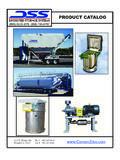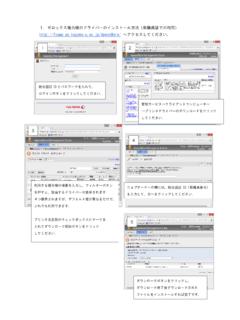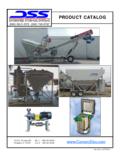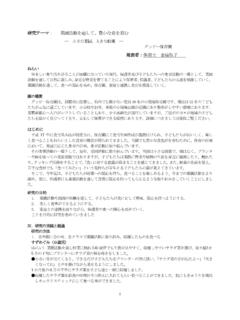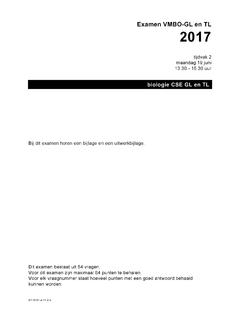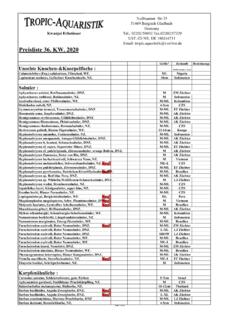Transcription of Calculating Tank Volume
1 Page 1 of 12 Calculating Tank Volume Saving time, increasing accuracy By Dan Jones, , alculating fluid Volume in a horizontal or vertical cylindrical or elliptical tank can be complicated, depending on fluid height and the shape of the heads (ends) of a horizontal tank or the bottom of a vertical tank. Exact equations now are available for several commonly encountered tank shapes. These equations can be used to make rapid and accurate fluid- Volume calculations. All equations are rigorous, but computational difficulties will arise in certain limiting configurations. All Volume equations give fluid volumes in cubic units from tank dimensions in consistent linear units.
2 All variables defining tank shapes required for tank Volume calculations are defined in the Variables and Definitions sidebar. Graphically, Figs. 1 and 2 show horizontal tank variables and Figs. 3 and 4 show vertical tank variables. Exact fluid volumes in elliptical horizontal or vertical tanks can be found by first Calculating the fluid volumes of appropriate cylindrical horizontal or vertical tanks using the equations described above, and then by adjusting those results using appropriate correction formulas. Horizontal Cylindrical tanks Fluid Volume as a function of fluid height can be calculated for a horizontal cylindrical tank with either conical, ellipsoidal, guppy, spherical, or torispherical heads where the fluid height, h, is measured from the tank bottom to the fluid surface, see Figs.
3 1 and 2. A guppy head is a conical head where the apex of the conical head is level with the top of the cylindrical section of the tank as shown in Fig. 1. A torispherical head is an ASME-type head defined by a knuckle-radius parameter, k, and a dish-radius parameter, f, as shown in Fig. 2. An ellipsoidal head must be exactly half of an ellipsoid of revolution; only a hemiellipsoid is valid no segment of an ellipsoid will work as is true in the case of a spherical head where the head may be a spherical segment. For a spherical head, |a| R, where R is the radius of the cylindrical tank body. Where concave conical, ellipsoidal, guppy, spherical, or torispherical heads are considered, then |a| L/2.
4 Both heads of a horizontal cylindrical tank must be identical for the equations to work; , if one head is conical, the other must be conical with the same dimensions. However, the equations can be combined to deal with fluid Volume calculations of horizontal tanks with heads of different shapes. For instance, if a horizontal cylindrical tank has a conical head on one end and an ellipsoidal head on the other end, calculate fluid volumes of two tanks , one with conical heads and the other with ellipsoidal heads, and average the results to get the desired fluid Volume . The heads of a horizontal tank may be flat (a = 0), convex (a > 0), or concave (a < 0).
5 The following variables must be within the ranges stated: |a| R for spherical heads |a| L/2 for concave ends 0 h 2R for all tanks f > for torispherical heads 0 k for torispherical heads D > 0 L 0 C Page 2 of 12 Variables and Definitions (See Figs. 1-5) a is the distance a horizontal tank's heads extend beyond (a > 0) or into (a < 0) its cylindrical section or the depth the bottom extends below the cylindrical section of a vertical tank. For a horizontal tank with flat heads or a vertical tank with a flat bottom a = 0. Af is the cross-sectional area of the fluid in a horizontal tank's cylindrical section. D is the diameter of the cylindrical section of a horizontal or vertical tank.
6 DH, DW are the height and width, respectively, of the ellipse defining the cross section of the body of a horizontal elliptical tank. DA, DB are the major and minor axes, respectively, of the ellipse defining the cross section of the body of a vertical elliptical tank. f is the dish-radius parameter for tanks with torispherical heads or bottoms; fD is the dish radius. h is the height of fluid in a tank measured from the lowest part of the tank to the fluid surface. k is the knuckle-radius parameter for tanks with torispherical heads or bottoms; kD is the knuckle radius. L is the length of the cylindrical section of a horizontal tank. R is the radius of the cylindrical section of a horizontal or vertical tank.
7 R is the radius of a spherical head for a horizontal tank or a spherical bottom of a vertical tank. Vf is the fluid Volume , of fluid depth h, in a horizontal or vertical cylindrical tank. Page 3 of 12 Horizontal Tank Equations Here are the specific equations for fluid volumes in horizontal cylindrical tanks with conical, ellipsoidal, guppy, spherical, and torispherical heads (use radian angular measure for all trigonometric functions, and D/2 = R > 0 for all equations): Conical heads. + <-=< +=--pp Ellipsoidal heads. -+=R3h1haLAV2ffp Guppy heads. ()()RhR3h2hRh2R9a2Rh1cos3Ra2 LAV212ff+--+ -+=- Spherical heads. ()()()()()2222222 Rwf2222122132122121322222ffRrzhhR2yhRwhe ads)concave(convexfor)(Rrr;0a|a| ;R,R,0a;D, ;R,R,0a;D, ,R, , , - - -+ -- = += <- ---- - + -- +-+++---== - =+ =++= -----dxxxppp Page 4 of 12 Torispherical heads.
8 In the Vf equation, use +(-) for convex(concave) heads. ()[]()()()()()()()()()()()()()()()aaaaaa apacosrcosDfgrzsinrsinDfghRwDkDkRnhDhsin 1 DkhDfrkf21k4kf8f4coskf2k21sincos1raag36a hhvvhhvvhhvv000, )hDh( ,322max,211max,1gw2111222122211222213212 212133coskD022221122hkDh2022221212max,3m ax,21max,12132max,111ff2==- = - -+- - - --+-=-- - +== = = << ------- <---+-+- -- +-+++-- -+-- - --- ++-=-<<++ =------------ xdxxxdxdx In the above equations, Vf is the total Volume of fluid in the tank in cubic units consistent with the linear units of tank dimension parameters, and Af is the cross-sectional area of fluid in the cylindrical body of the tank in square units consistent with the linear units used for R and h.
9 The equation for Af is given by: ()212fhhR2hRRhRcosRA--- -=- Page 5 of 12 Figure 1. Parameters for Horizontal Cylindrical tanks with Conical, Ellipsoidal, Guppy, or Spherical Heads. Cylindrical Tube Spherical head Hemiellipsoid head r(sphere) D Guppy R h head Conical head a(sphere) a(ellipsoid) a L (cone; guppy) Af Fluid cross-sectional area CROSS SECTION OF CYLINDRICAL TUBE h 1. Both heads of a tank must be identical. Above diagram is for definition of parameters only. 2. Cylindrical tube of diameter D (D > 0), radius R (R > 0), and length L (L 0). 3. For spherical head of radius r, r R and |a| R.
10 4. For convex head other than spherical, 0 < a < , for concave head a < 0. 5. L 0 for a 0, L 2|a| for a < 0. 6. Ellipsoidal head must be exactly half of an ellipsoid of revolution. 7. 0 h D. Page 6 of 12 Figure 2. Parameters for Horizontal Cylindrical tanks with Torispherical Heads. kD h2 R D a fD h L h1 Horizontal Cylindrical Tank Examples The following examples can be used to check application of the equations: Find the volumes of fluid, in gallons, in horizontal cylindrical tanks 108" in diameter with cylinder lengths of 156", with conical, ellipsoidal, guppy, spherical, and standard ASME torispherical (f = 1, k = ) heads, each head extending beyond the ends of the cylinder 42" (except torispherical), for fluid depths in the tanks of 36" (example 1) and 84" (example 2).
